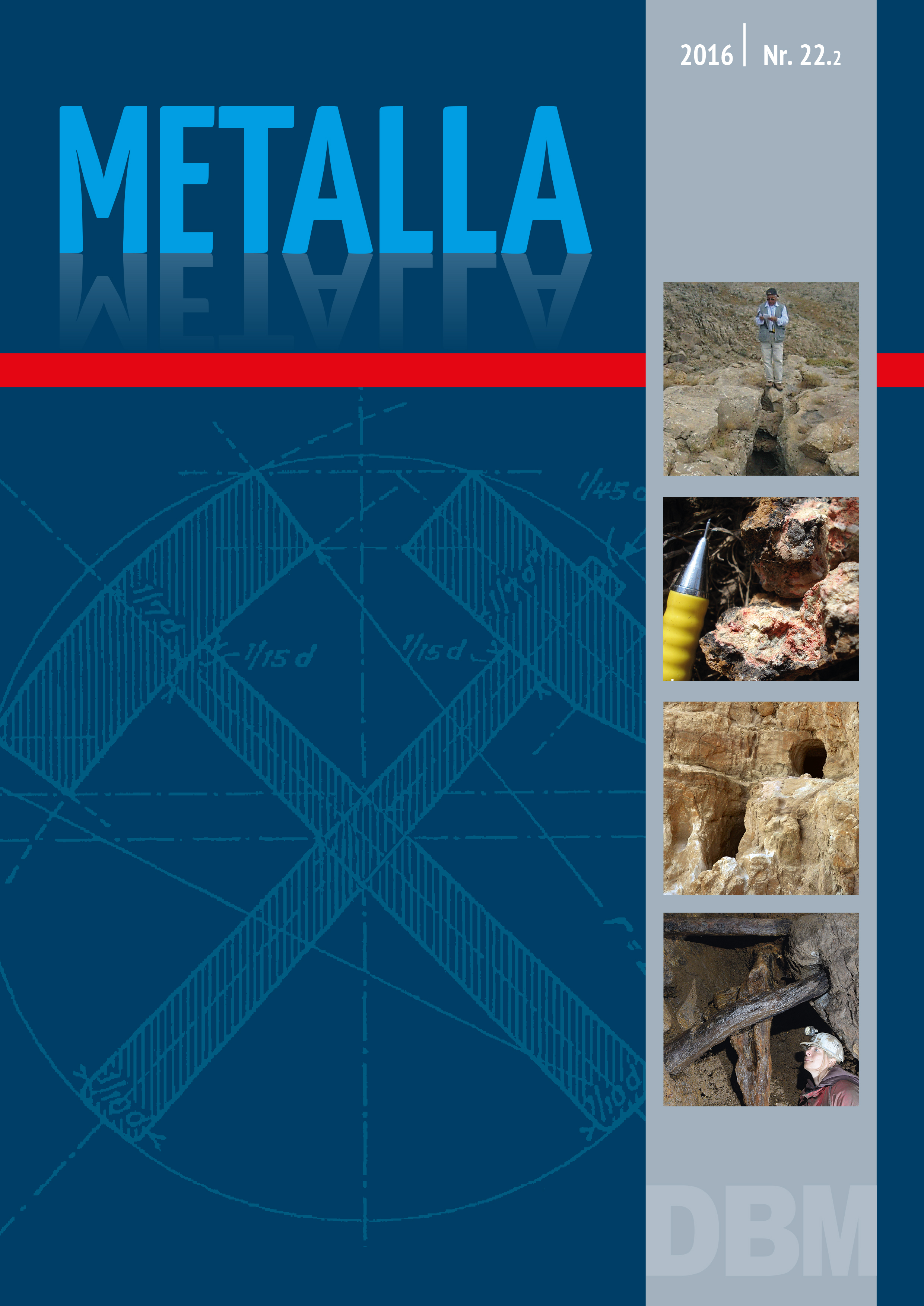In the Shadow of Timna? The Mining Region of Wadi Amram New Analytical and Archaeological Aspects
DOI:
https://doi.org/10.46586/metalla.v22.2016.i2.169-183Keywords:
Archaeometallurgy, Copper Ore, Trace Elements, Lead Isotope Analysis, Provenance Studies, Wadi ArabahAbstract
The copper mines of Wadi Amram are located only 10 km north of the prehistoric settlements Tall Hujayrat al-Ghuzlan and Tall al- Magass where there is some evidence of copper metallurgy in the Late Chalcolithic / Early Bronze Age I. These two settlements lay near the Gulf of Aqaba and may have been important nodes for the distribution of copper during this period. Earlier lead isotopic studies demonstrated that copper ores from the mines of Timna and Faynan are possible sources for the early copper production, but up until now the much closer copper deposit of Wadi Amram has been ignored. New lead isotope data has shown that the Wadi Amram copper ore can be distinguished from the ore from Timna and closely correlates to the Faynan copper ores. Some of the copper-related objects from Tall Hujayrat al-Ghuzlan and Tall al-Magass have lead isotope ratios more comparable to ore from Wadi Amram than from Timna and warrants a reassessment of the organization mode of the prehistoric mining industry in the southern Levant.
Downloads
Published
Issue
Section
License
Copyright (c) 2017 Andreas Ketelaer, Andreas Hauptmann

This work is licensed under a Creative Commons Attribution 4.0 International License.



